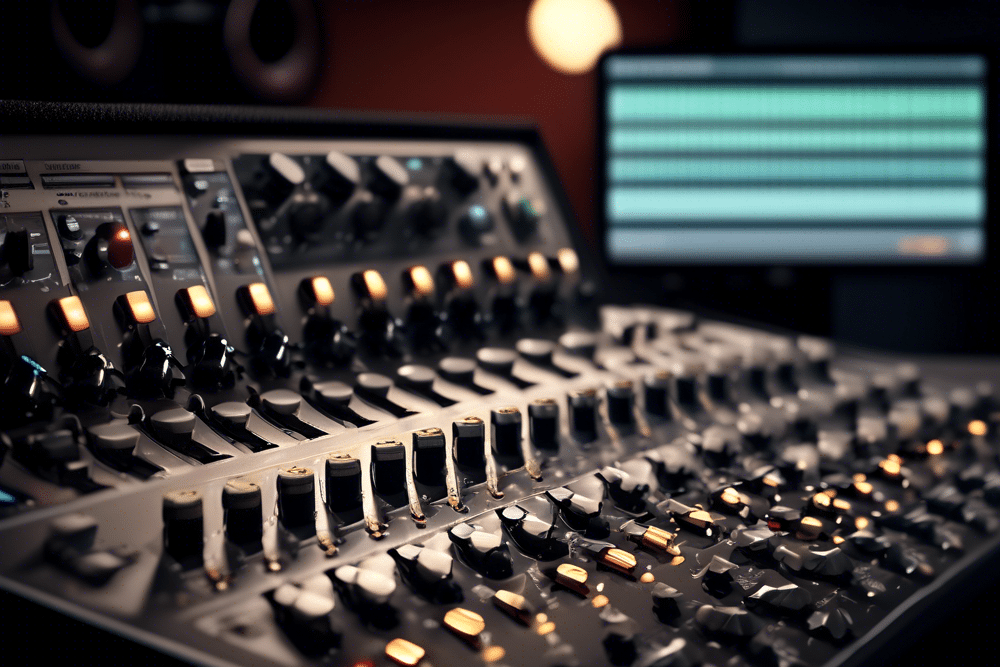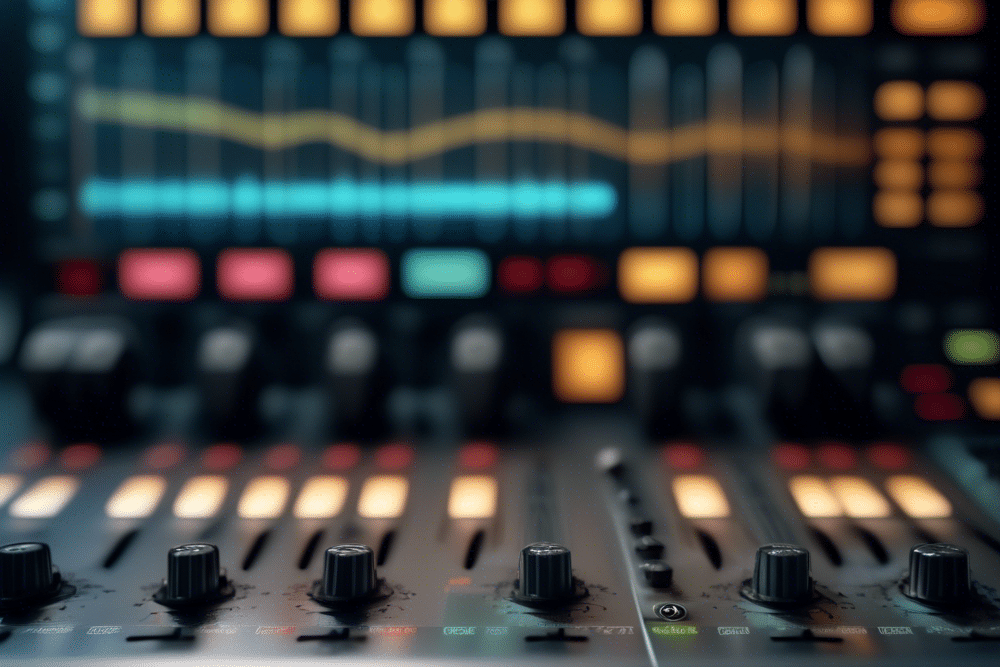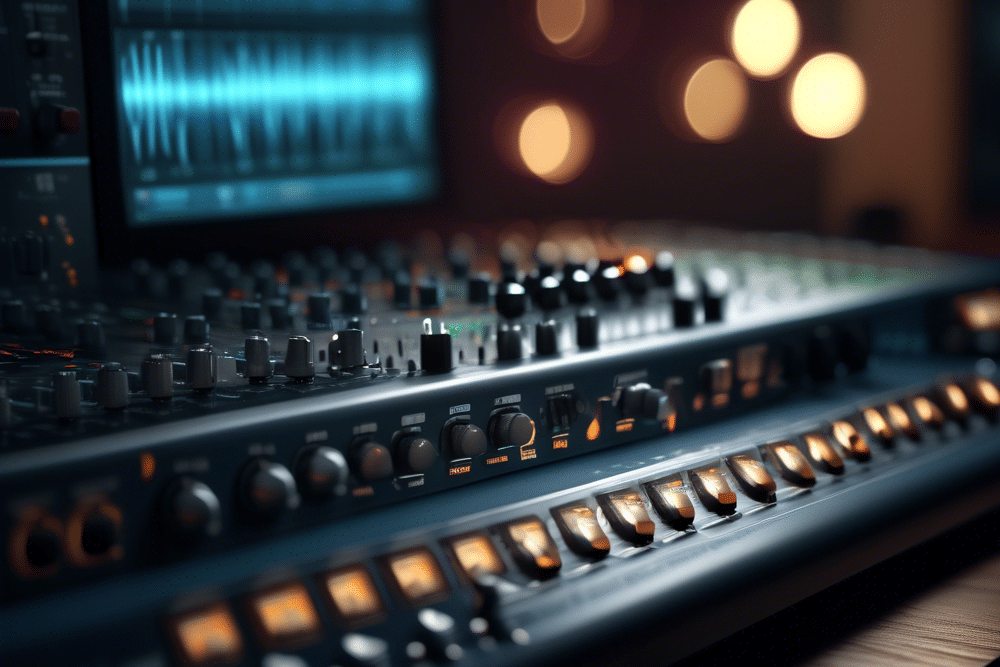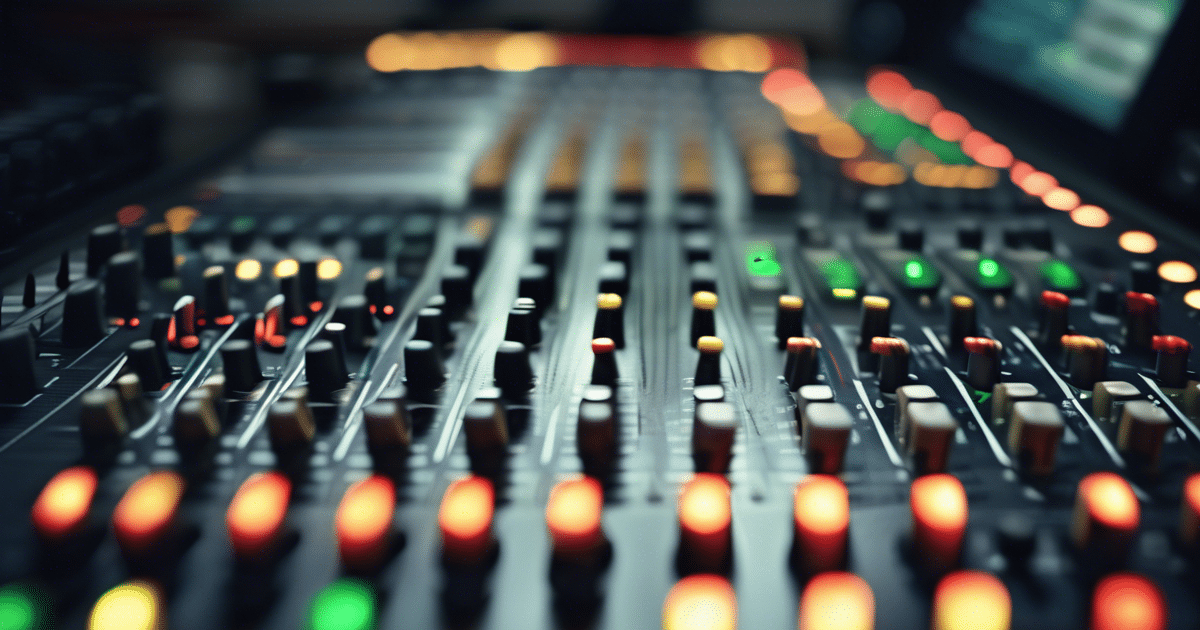Estimated reading time: 9 minutes
Introduction: The Power of the Mix Bus in Music Production
As an aspiring music producer, you’ve likely encountered the term “bus” or “mix bus” in your journey through the world of audio production. But what exactly is a bus in music production, and why is it such a crucial element in crafting professional-sounding tracks? In this comprehensive guide, we’ll dive deep into the world of mix buses, exploring their function, benefits, and how to harness their power to elevate your music production game.
Table of contents
- Introduction: The Power of the Mix Bus in Music Production
- What is a Bus in Music Production?
- The Role of Mix Buses in Audio Mixing
- How to Create and Use a Mix Bus in Your DAW
- Advanced Mix Bus Techniques
- Common Pitfalls and How to Avoid Them
- Video: What is a Bus and How to Use it
- Conclusion: Mastering the Mix Bus
- FAQs
What is a Bus in Music Production?
At its core, a bus in music production is a virtual pathway that allows you to route multiple audio signals to a single destination. Think of it as a musical highway where different instruments and sounds can travel together, ultimately leading to a unified output. This concept is fundamental to modern music production and plays a pivotal role in shaping the overall sound of a mix.
The Anatomy of a Bus
To better understand the concept of a bus, let’s break it down into its key components:
- Source Tracks: These are the individual audio tracks in your project, such as vocals, guitars, drums, or synthesizers.
- Bus Channel: This is the virtual channel that receives and combines the signals from multiple source tracks.
- Processing: The bus channel can have its own effects and processing, which will affect all the signals routed through it.
- Output: The processed audio from the bus is then sent to the main output or another bus, depending on your mixing strategy.
Types of Buses in Music Production
While the term “bus” can apply to various routing scenarios in audio production, there are a few common types you’ll encounter:
- Instrument Buses: These group similar instruments together, like drum bus, string bus, or backing vocal bus.
- Effect Buses: Also known as aux sends or return channels, these are used for shared effects like reverb or delay.
- Submix Buses: These combine multiple instrument buses into broader categories, such as all rhythm section elements.
- Master Bus: This is the final destination for all audio in your mix before it reaches the output.

The Role of Mix Buses in Audio Mixing
Now that we’ve covered the basics, let’s explore why mix buses are so important in the audio mixing process.
Simplifying Complex Mixes
One of the primary benefits of using buses in music production is their ability to simplify complex mixes. Instead of dealing with dozens of individual tracks, you can group similar elements together, making it easier to manage and balance your mix.
For example, imagine you’re working on a pop song with:
- 8 drum tracks
- 4 bass tracks
- 6 guitar tracks
- 3 synth tracks
- 5 vocal tracks
By routing these tracks to their respective buses, you can reduce your mixing workflow to just 5 main channels, dramatically simplifying the process.
Applying Cohesive Processing
Another significant advantage of using mix buses is the ability to apply processing to multiple tracks simultaneously. This not only saves time but also helps create a more cohesive sound within your mix.
For instance, by routing all your drum tracks to a drum bus, you can:
- Apply compression to tighten up the overall drum sound
- Add EQ to shape the collective tone of the drums
- Insert saturation or other effects to add character to the entire drum kit
This approach ensures that all the drum elements work together harmoniously while still maintaining their individual characteristics.
Balancing and Controlling Levels
Mix buses also provide an efficient way to control the overall levels of different instrument groups in your mix. Instead of adjusting the volume of multiple individual tracks, you can use the bus fader to raise or lower the entire group at once.
This level of control is particularly useful when:
- Balancing the rhythm section against the melodic elements
- Adjusting the prominence of backing vocals in relation to the lead
- Fine-tuning the overall mix balance in the final stages of production
Creating Depth and Space
By utilizing effect buses, you can create a sense of depth and space in your mix without overwhelming your CPU or muddying the individual tracks. Common applications include:
- Reverb buses: Send multiple tracks to a shared reverb to create a cohesive sense of space
- Delay buses: Use a single delay effect for various elements, maintaining timing consistency
- Parallel processing: Create duplicate buses for techniques like parallel compression or distortion
How to Create and Use a Mix Bus in Your DAW
Now that we understand the importance of mix buses, let’s walk through the process of creating and using them in your Digital Audio Workstation (DAW).
Step 1: Create a New Bus Channel
In most DAWs, you can create a new bus channel by:
- Right-clicking in the mixer view
- Selecting “Add Bus” or “Create Bus Channel”
- Naming your bus (e.g., “Drum Bus” or “Vocal Bus”)

Step 2: Route Tracks to the Bus
To send your tracks to the newly created bus:
- Select the tracks you want to route
- Look for an output or send option in the channel strip
- Choose your new bus as the destination
Step 3: Add Processing to the Bus
Once your tracks are routed, you can add effects and processing to the bus channel:
- Insert plugins on the bus channel strip
- Adjust the settings to taste, keeping in mind that these will affect all routed tracks
Step 4: Balance and Blend
Finally, use the bus fader to adjust the overall level of the grouped tracks in your mix:
- Start with the bus fader at unity gain (0 dB)
- Raise or lower the fader to find the right balance with other elements in your mix
- Make fine adjustments to individual tracks within the bus if necessary
To see bussing in action within a high-energy genre, explore our detailed guide to Hardstyle music, where we dissect the routing strategies that give hardstyle its trademark punch. Then elevate your own mixes by grabbing one of our Hardstyle Sample Packs, perfectly crafted for group processing on drum, bass, and FX buses.
Advanced Mix Bus Techniques
As you become more comfortable with using buses in your productions, you can explore more advanced techniques to further enhance your mixes.
Parallel Processing
Parallel processing involves duplicating a signal and processing it separately before blending it back with the original. This technique can add depth and character to your mix without losing the integrity of the original sound.
To set up parallel processing:
- Create a new bus channel
- Send your desired tracks to this bus (usually as a pre-fader send)
- Apply heavy processing to the bus (e.g., aggressive compression or distortion)
- Blend the processed bus with the original tracks to taste
Mid/Side Processing on the Master Bus
Mid/Side processing allows you to treat the center and sides of your stereo image separately. This can be particularly useful on your master bus for creating width and clarity in your final mix.
To use Mid/Side processing:
- Insert a Mid/Side capable plugin on your master bus
- Use EQ to boost high frequencies on the sides for added width
- Apply compression to the mid channel to tighten up the center of your mix

Bus Compression
Bus compression is a powerful technique for gluing elements together and adding cohesion to your mix. It’s commonly used on drum buses, instrument groups, and the master bus.
Tips for effective bus compression:
- Start with a low ratio (2:1 or 3:1) and adjust as needed
- Use a slow attack time to preserve transients
- Set a medium to fast release time to maintain energy
- Aim for 1-3 dB of gain reduction for subtle glue, or more for effect
Common Pitfalls and How to Avoid Them
While mix buses are incredibly useful, there are some common mistakes that beginners often make. Here’s how to avoid them:
Overprocessing
It’s easy to get carried away with processing on a bus channel. Remember that any changes you make will affect all the tracks routed through it. Start subtle and increase as needed.
Neglecting Individual Track Processing
While buses are great for group processing, don’t forget about the importance of processing individual tracks. A well-balanced mix starts with well-treated source material.
Improper Gain Staging
Pay attention to the levels going into and out of your buses. Overloading a bus can lead to unwanted distortion and a loss of headroom in your mix.
Creating Too Many Buses
While buses can simplify your mix, creating too many can overcomplicate things. Start with basic instrument groups and expand as needed.
Video: What is a Bus and How to Use it
Conclusion: Mastering the Mix Bus
Understanding and effectively using buses in music production is a game-changer for aspiring producers. By grouping similar elements, applying cohesive processing, and simplifying your mixing workflow, you can create more professional-sounding mixes with greater ease and efficiency.
Remember, like any aspect of music production, mastering the use of mix buses takes practice and experimentation. Don’t be afraid to try different routing and processing techniques to find what works best for your style and workflow.
As you continue to develop your skills, you’ll find that mix buses become an indispensable tool in your production arsenal, helping you craft cleaner, more polished, and more impactful music. So go ahead, dive in, and start exploring the power of the mix bus in your next production!
“The mix bus is not just a technical tool, but a creative one. It’s where individual elements come together to form a cohesive musical statement.” – Anonymous Producer
By incorporating mix buses into your workflow and continually refining your approach, you’ll be well on your way to achieving professional-quality mixes and taking your music production skills to the next level. Happy mixing!
Related Posts
FAQs
A bus is a virtual signal path in your DAW that combines multiple audio tracks into one channel for collective processing or routing.
Buses let you apply EQ, compression, reverb, or other effects to groups of tracks at once—saving CPU and ensuring consistent processing.
Route the outputs of individual tracks to an auxiliary (aux) or group track, then insert your desired plugins on that bus channel.
Typical buses include drum bus, vocal bus, FX bus (for reverb/delay), and master bus for final mix processing.
Yes—by grouping related tracks (e.g., all drums) you simplify your mix, make global adjustments easily, and keep your session organized.
